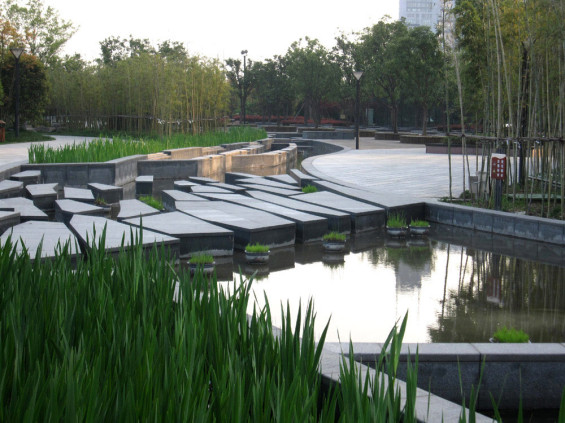
The New Hanzghou CBD is the major landmark development for the future expansion of the city of Hangzhou, and will house large offices, retail complexes, high rise residential units , hotels and major cultural features such as the Opera House and Convention Centre.
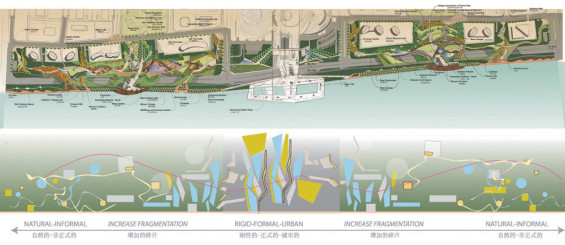
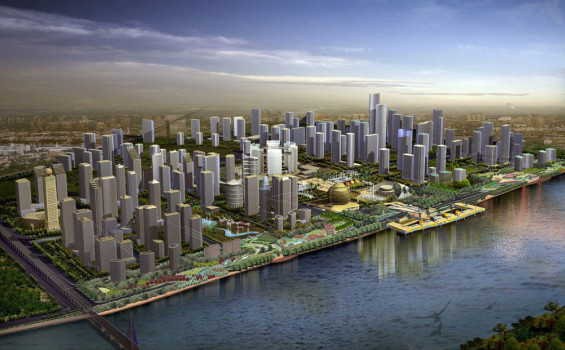
Following acceptance of a Landscape Master Plan for this unique foreshore park to integrate the New Hangzhou CBD development edge to the Qiantiang River, KI Studio (then Kiah Infranet) were engaged to design and document the landscape design and the architectural concept design. The site area is 370,000m2; 2.5km long by 200 to 150 metres wide, running in a linear strip adjacent the Qiantang River, Hangzhou.
The client requested a contemporary design that would complement the character of the New CBD -the “Wave City”- and that would create a “green thread” through the disparate city parts. Critical to the resolution of the project was a thorough analysis of the access and circulation of cars, bikes, pedestrians; appropriate level transitions and creating stronger links to adjacent parks, streets and community facilities.
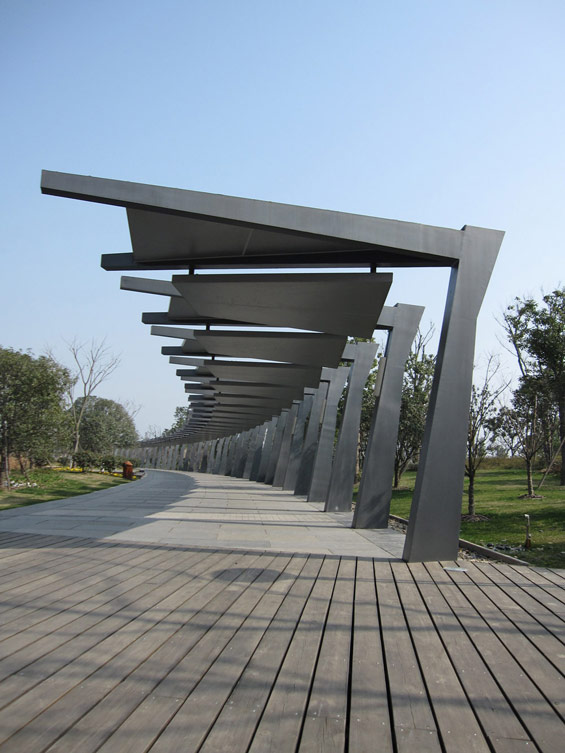
The project resolves the complex access /permeability problems of the site through integrated planning/landscape architecture and urban design skills, and integrates the formal central access with a major park space, thereby creating a usable, functional and adaptable plan for the park that strongly reflects the unique natural and cultural heritage of the site. A fresh, contemporary and sustainable image is created for the new City CBD Foreshore Park.
The design is not just visually attractive, but also meaningful, functional and sustainable; it articulates the main central access between the Hangzhou Theatre and the International Conference Centre, and creates strong green links/pedestrian links between the adjacent city parks and the CBD Foreshore Park.
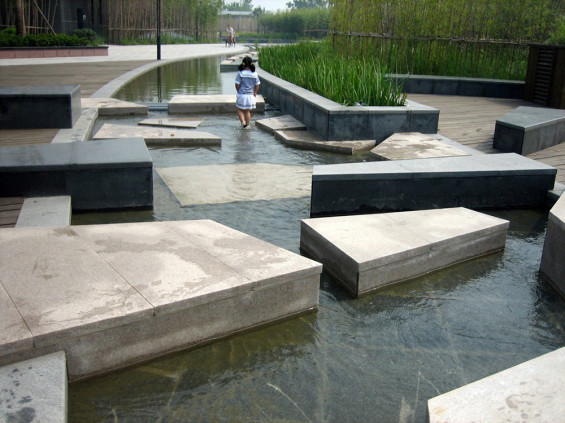
Human Scale
Due to the large scale of the project and the partially ‘colossal’ resolution of adjacent spaces such as the theatre forecourt, main axis linking to the historic town etc, a key challenge in the design resolution was to maintain the ‘grand’ character while also allowing for the ‘human scale’. We wanted places for people and for people to interact with the place.
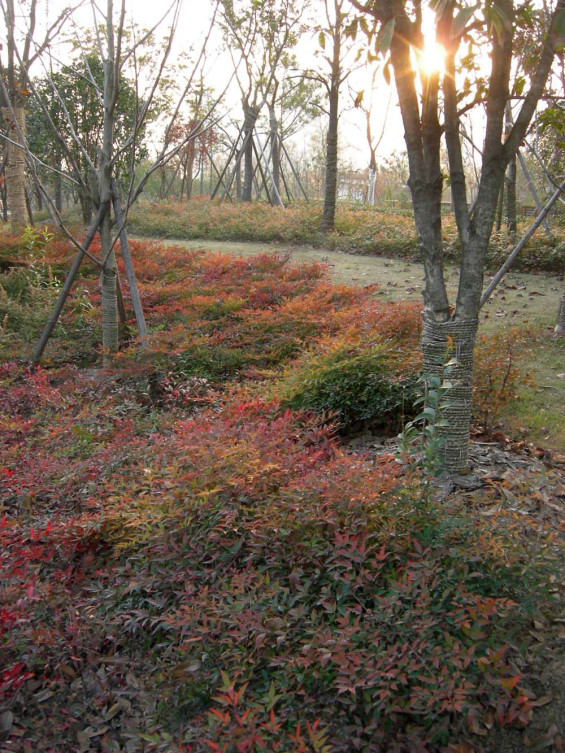
Articulation of spaces, forms
The design demonstrates sensitive articulation of spaces and levels within the constraining linear form and the constraints of being 75% roof garden, over tunnels and car parks below. A legible and creative landscape has evolved to provide a landscape of flexibility, adaptability, sustainability and a place for people. Cafes, an exhibition hall, underground carparking and two main tea houses provided activity generators throughout the park.
Main functional areas include an outdoor amphitheatre, seating terraces, various cafes, kiosks and tea houses, access to underground carpark, playgrounds, sculpture gardens, water features, meditation gardens, bore watching platforms and an internal cycleway. A variety of recreation spaces from active to passive were woven through the design, varying in function from the formal (central axis space) to the informal ( east/west ends of the park) .
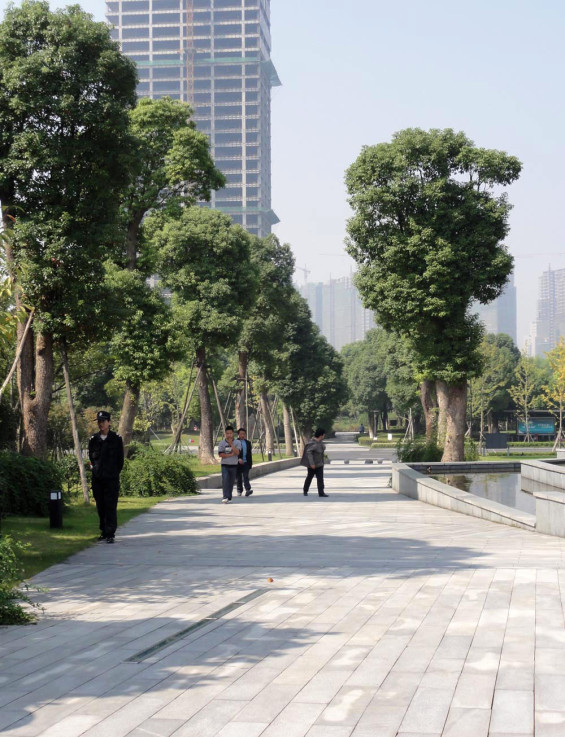
Open space as the linking ribbon… and offering adaptability
The aim of the masterplan was to provide a more unified, legible open space framework that successfully integrated the individual components and developments within the New CBD. Key to the success was the spatial and visual integration with adjacent areas such as developments, the central axis, and adjacent parks and to provide legible access and circulation between these, as well as creating spaces for uses that would adapt to changing recreational and social needs over time.
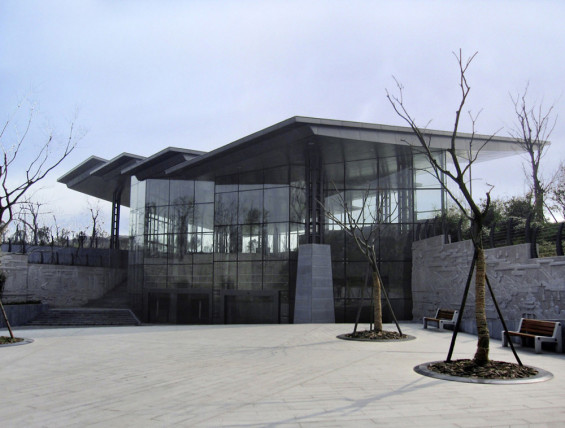
Reflect the unique story of the site
Key to any design project is also the underlying themes and meanings, this is particularly important for China. The design reinforces the masterplan intent, of transitioning from the formal/ axial central area to areas displaying informal characteristics to the east and west edges of the park. It reflects the history of the Qiantang Bore through the introduction of tidal watching platforms, wave like paving patterns and earth forms to reinforce the significance of the tidal bore to the site; and also reflects the original farming fields that were previously on site. The design reflects upon the rich heritage of Hangzhou and West Lake and weaves cultural landscape values through the park design to add richness and variety.
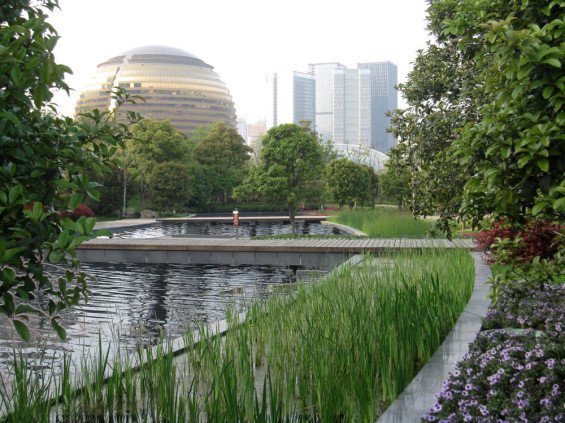
Sustainable Design
The majority of the park is actually a “green roof” design which brought challenges of levels, drainage, and maintenance. Water features uses recycled rainwater and stored the water above the slab structure.
The design promotes people to use the waterfront; provides pedestrian/cycle connectivity; incorporates small scale built structures e.g. kiosks, stalls that do not require road large infrastructure development; and creates a river promenade that is alive at night and day. The landscape planting themes reinforce both the indigenous themes and the cultural themes of Hangzhou.
Location: Between Fuchun Road and Qiantang River, Hangzhou New CBD, HANGZHOU, P.R. CHINA
Scope: MASTERPLAN, LANDSCAPE AND URBAN DESIGN DETAIL DOCUMENTATION, ARCHITECTURAL SKETCH DESIGN.
Contract administration was undertaken by the local Landscape Design and Architectural Institutes.
Team: KI STUDIO (strategic planning, landscape architecture, urban design, architecture) / BEIJING LANDSCAPE DESIGN INSTITUTE (legal tender documentation, site)
Client: Hangzhou Qianjiang New CBD Construction Committee
Text: KI STUDIO
Images: KI STUDIO and Magnolia

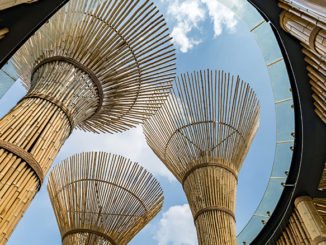


Comments are closed.